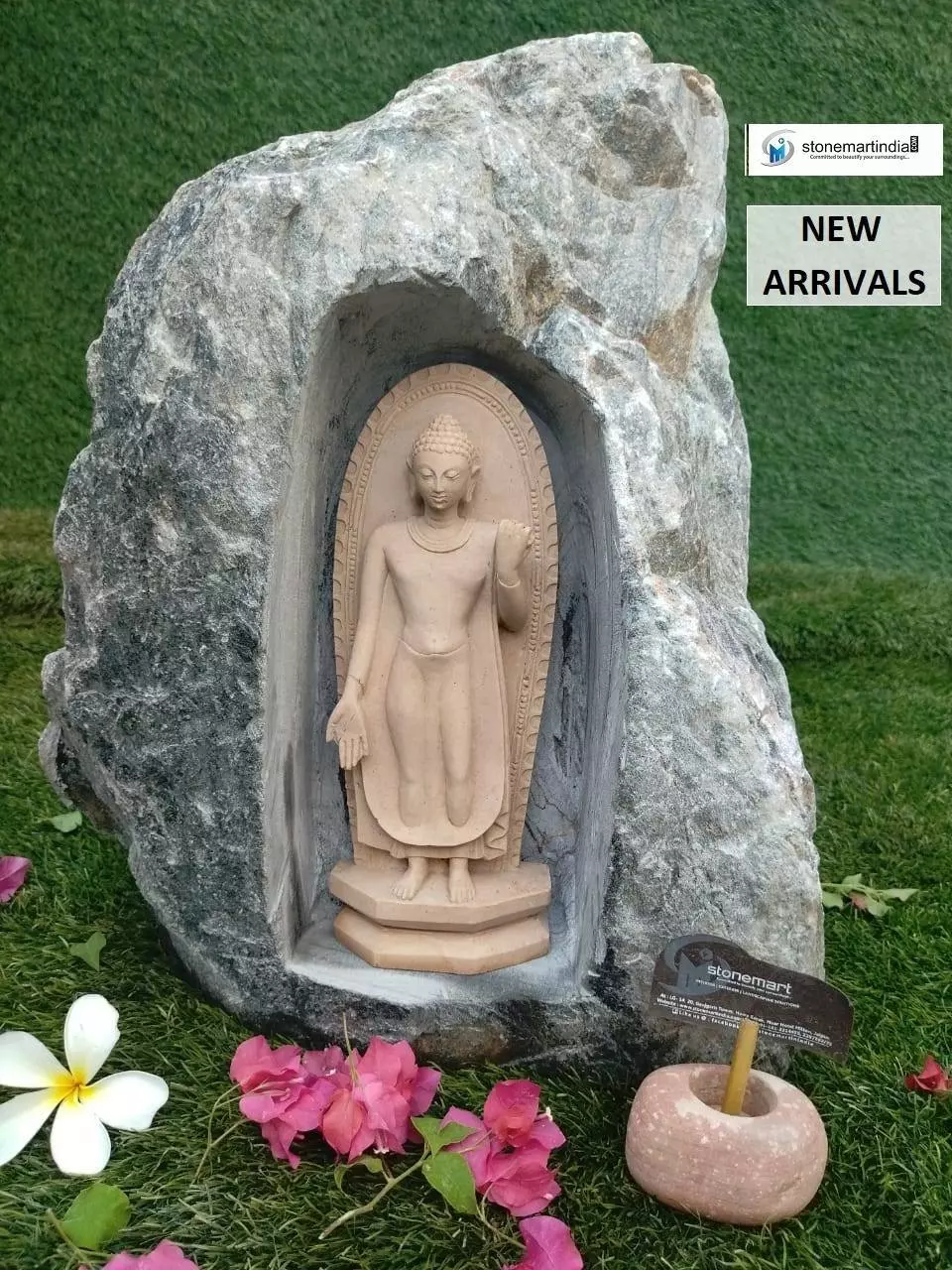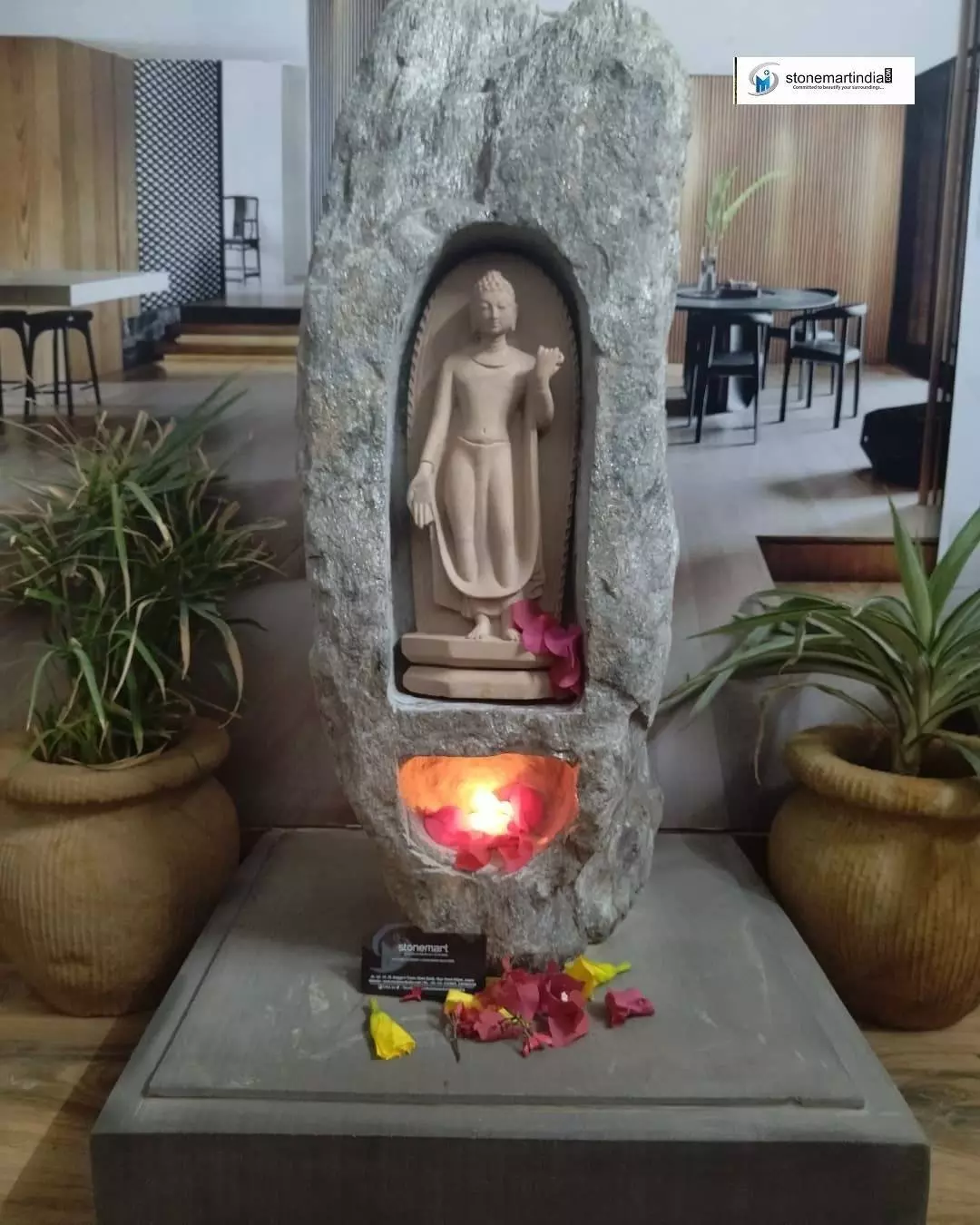
The Legacy of the Bamiyan Buddhas
What makes the legacy of the Bamiyan Buddhas unique and extraordinary is the confluence of Gupta, Hellenistic, and Sassanian architectural styles. In their Roman draperies, the Bamiyan Buddhas were known for the depiction of two different mudras. The overall heights of Salsal and Shamama were 55 metres and 38 metres and were portrayed to be male and female respectively. The name Salsal denotes “the light which shines across the universe”; whereas Shamama denotes “Queen Mother”. The statues are surrounded by various caves with paintings decorating the surface.
2001: The Year When the Legacy Perished…
In March 2001, despite enormous international pressure, the Taliban blew up the two iconic Buddha statues in the Bamiyan valley of Afghanistan, 81 miles north-west of Kabul. Once boasted as one of the tallest statues of the world, these architectural marvels of the ancient era were turned into smithereens through the tank shelling of the Taliban. The UNESCO inscribed it as an endangered site since 2003 to make sure that the world gets the attention of the further deterioration of the site and take measures to safeguard the remaining valley for the future.

What is the Importance of Bamiyan?
When we look from the geographical perspective, Bamiyan is in the ranges of the Hindu Kush mountains at the central highlands of Afghanistan. The valley, that is adjacent to the banks of Bamiyan River, has once indeed been an integral part of the early periods of the Silk Roads, bestowing passage to not merely the merchants, but also religion, culture, and language. During the time when the Kushan Empire spread Buddhism, Bamiyan transformed into the epicentre of trade, religious and cultural dimensions. The Indians, Romans and Chinese when accessed the passage through the valleys of Bamiyan, they helped the Kushans to successfully develop a syncretic culture.
The spread and expansion of Buddhism that happened amidst the 1st to 5th centuries AD, the landscape of Bamiyan reflected upon the faith, especially in terms of its monastic qualities. The pair of colossal Buddhas were the most conspicuous sections in contrast to the other structures, like the stupas, smaller kind seated as well as standing Buddha statue, along with the caricature of the wall paintings in the caves, spread across the surrounding valleys.
The Timeline of the Destruction of the Buddhas by the Taliban
It all happened with the inception of the hard-line Taliban movement, that emerged during the early 1990s, and steadily captured almost 90% of the entire Afghanistan once the decade marked its end. While the governance of the Taliban was functioning with a facade of curbing lawlessness, they simultaneously introduced these so-called “Islamic punishments”. These included a series of regressive ideas of Islamic practices, including the culture of banning television, songs, schooling for girls aged 10+ and parallelly endorsing public executions.
The obliteration of the Buddha stone statue at Bamiyan was a well promoted part of this extremist culture. It was on February 27, 2001, that the Taliban expressed its intention to annihilate the Buddha statues, despite widespread condemnation and protests from the governments, cultural centres, and ambassadors across the globe. Some of the most renowned personalities of the world, including the Dalai Lama voiced their concerns; with the countries like India that offered to make arrangements for the transfer and protection of the artefacts.
However, the Taliban was keener to not just demolish the Buddhas but also to enjoy the spectacle of the same. It was on March 2, that the destruction of the Buddha statue stone began with guns, tanks, and artillery; when those inflicted considerable if not complete damage, the militants of the regime switched to mines and rockets. It took a month for these gigantic statues to get razed onto the ground.
In a series of interviews that happened later, the then supreme leader of Taliban, Mullah Omar put forth multiple reasons to defend his actions of destroying the Buddhas, including the immense pride in smashing down the idols as per the scriptures of the Islamic law, as well as to teach the foreigners a lesson for diverting the funds to humanitarian work. As of now, when we have marked 20 years to the destruction of the Bamiyan Buddhas, it is crucial to know that the Taliban was not the first and foremost group to target the statues of the Bamiyan Valley on the grounds of Islamic fanaticism. It began in the 17th century AD, when Aurangazeb, the Mughal emperor ordered to damage the faces of the giant statues with the help of artillery.

The Aftermath of the Final Destruction
The destruction of the Buddhas of Bamiyan by the Taliban met with unanimous criticism globally, with several entities that saw it as a grievous cultural crime not only against the country of Afghanistan but also against the core idea of having a global syncretism. Regrettably, the event forged the path for identical attacks on the cultural heritage sites in different parts of the world. For instance, the destruction of the old city of Nimrud by the Islamic State (ISIS) in the year 2016, along with the tragic killing of the archaeologist Khaled al-Asaad, at the time when he refused to reveal the information on the locations of the invaluable artefacts of Palmyra in the year 2015.
UNESCO incorporated the remaining sites of the valley in its list of the UNESCO World Heritage Sites in the year 2003. There have been subsequent efforts for the restoration and reconstruction of the Gautam Buddha statues in their respective niches with the pieces that are available. However, some of the historians are putting forth an argument that all the efforts to rebuild the Buddhist statues in an Islamic country would eventually go down in vain. Especially when the Taliban has regained its foothold in the country after 20 years. While there is a faction of historians who suggest keeping the empty niches as they are, to mark them as a reminder for the future generations on how the most fanatic acts committed in the name of religion can lead to the destruction of the virtues that the mankind otherwise cherish.
The Good News: We are Resurrecting the Bamiyan Buddhas and Welcoming them to your Home
Well, even if the restoration or rebuilding of the Buddhas of Bamiyan becomes a reality in the unforeseen future, one cannot expect it to happen anytime sooner. But there is a way by which you can resurrect the times of Bamiyan Buddha in its modest form and bring it home for everyone to venerate and cherish the old times. Yes, it is now possible for you to relive the history by bringing home a Bamiyan Buddha stone statue online.
One can find 100% authentic, natural stone Bamiyan Buddha statue for sale from the most trusted and leading manufacturer and supplier online. Reach Stonemart right now and witness how the most respected and gifted Indian sculptors are etching the lost historical heritage of Bamiyan inch-by-inch to the most unique and latest Buddha idols. It is the time to bring home the figments of our shared history and treasure them for a lasting inspiration to the present and future generations.
